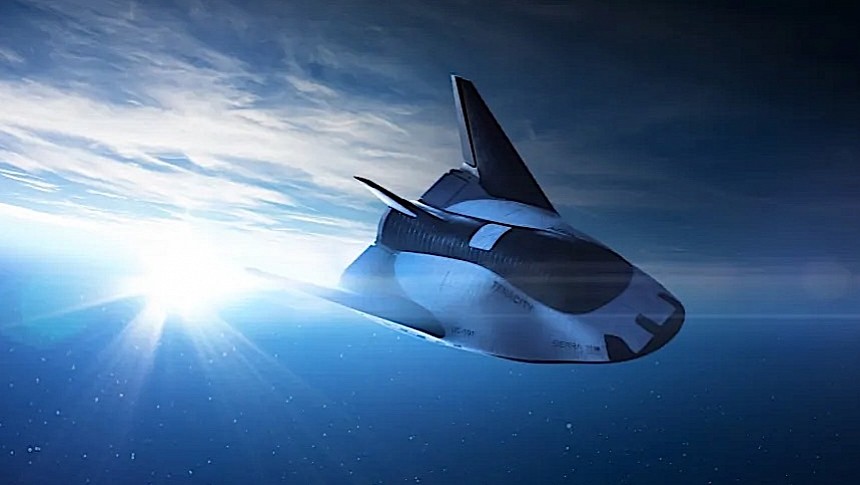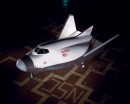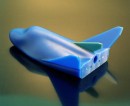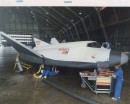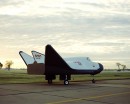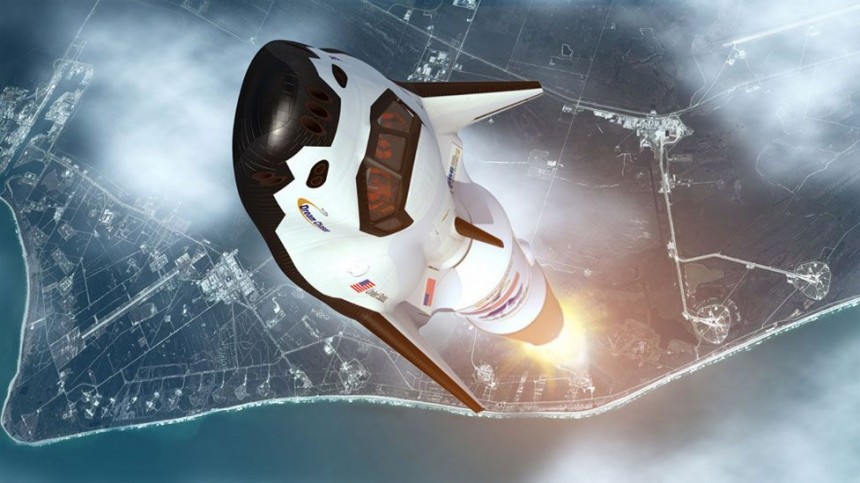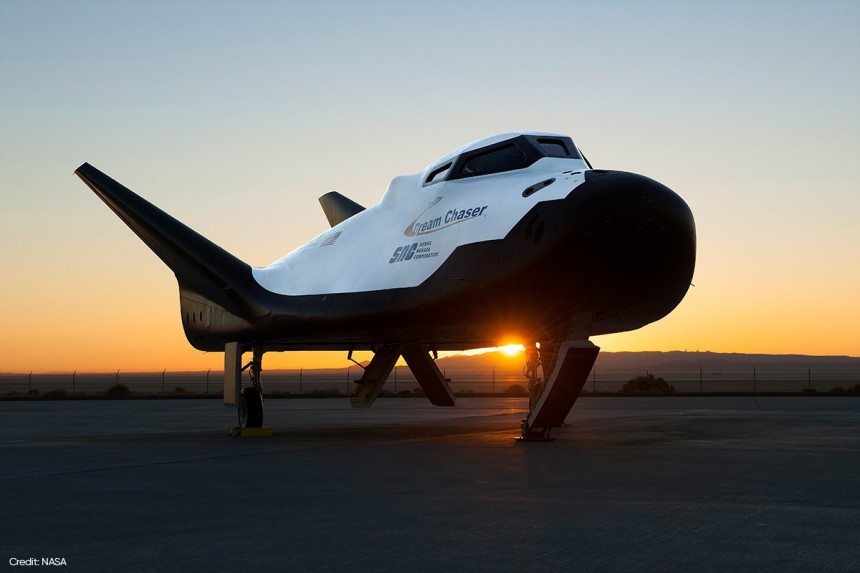It seems like forever since we first learned of the Dream Chaser spaceplane being put together by private company Sierra Space, but it seems we are now closer than ever to the first launch of the spacecraft as part of an official NASA mission.
Dream Chaser is Sierra Space's attempt to enter what appears to be a very lucrative business of resupplying the International Space Station (ISS). That's something that's currently being done with a couple of privately developed spaceships, the most talked about being, of course, the SpaceX Crew Dragon (the other one is the Northrop Grumman-made Cygnus).
The Dream Chaser is an evolution of the HL-20 spacecraft NASA was considering back in the 1960s and 1970s. It's meant, like all other vehicles of its kind made in our day and age, to be reusable and carry plenty of cargo to the ISS.
Designed as a lifting body, the spaceplane comprises the actual spacecraft, called the Dream Chaser, and a cargo module dubbed the Shooting Star, which can carry both pressurized and unpressurized cargo. The former is, if you like, the truck, and the latter is the trailer full of goodies it carries with it.
The uncrewed truck itself can be launched and recovered for up to 15 times, and that should decrease the overall cost of the missions. On the other hand, its trailer (or container, if you find that comparison more appealing), is a one-time deal, being disposed of before the Dream Chaser makes its way back to Earth.
Although in some respects it kind of looks like the defunct Space Shuttle, the Dream Chaser will not take off attached to a massive fuel tank. Instead, it will be fitted inside a five-meter fairing fitted on top of a United Launch Alliance (ULA) Vulcan Centaur rocket.
Its wings will be folded to fit inside the fairing, and they won't unfold, together with solar panels installed on the cargo module, until the spaceplane has reached orbit and is en route to the ISS.
The first mission of the Dream Chaser, tentatively scheduled for April 2024, will depart from the Space Launch Complex 41 at Cape Canaveral Space Force Station in Florida. During this flight it will mostly conduct in-orbit demos of its capabilities for what's to come next.
NASA took the opportunity of the machine currently undergoing test procedures at the Neil Armstrong Test Facility in Sandusky, Ohio, to give us an insight into the mission that may seriously ease the pace of ISS resupply missions and give the agency more options.
After launch there will be two kinds of procedures conducted, far-field and near-field. In the case of the former the plane will have to prove itself in the vicinity of the space station, right before it reaches something called the approach ellipsoid. That's an imaginary boundary located 2.5-by-1.25-by-1.25 miles around the ISS.
The Dream Chaser will enter joint operations with the Mission Control Center in Houston, which will put the spacecraft through its paces by testing stuff like attitude control, translational maneuvers, and abort capabilities.
Once the ship passes the approach ellipsoid the near-field demos will begin. These are meant to test the ship's LIDAR, and how it responds to commands received from the ISS. It needs to properly respond to commands to retreat and hold at three distances: 1,083 feet (330 meters), 820 feet (250 meters), and 98 feet (30 meters).
Once these hurdles have been cleared the Dream Chaser will be given the green light to approach the ISS, stopping one more time at a distance of 38 feet (11.5 meters). The station will extend one of its robotic arms to grab the ship's cargo module and dock it at either the Unity or Harmony modules.
Like it always does, NASA will use this test mission to actually transport stuff to space. A total of 7,800 pounds (3,500 kg) of cargo will be fitted inside the Shooting Star. It may be loaded back with 8,700 pounds (3,900 kg) of space trash to be burned in the atmosphere. Separately, the Dream Chaser itself could bring back as much as 3,500 pounds (1,590 kg) of samples and science.
On its first trip up the spaceplane will stay attached to the ISS for 45 days. It will then start its up to 15 hours journey down the Earth, to land just like the Shuttle used to do on a runway located at the Kennedy Space Center's Launch and Landing Facility, a strip of land that has remained unused since the Shuttle was retired back in 2011.
If all goes well with this first mission the Dream Chaser will be quickly prepped for the next one. When fully operational it will be capable of carrying to orbit as much as 11,500 pounds (5,200 kg) of cargo, and will be able to stay in space for as much as 75 days.
The Dream Chaser is an evolution of the HL-20 spacecraft NASA was considering back in the 1960s and 1970s. It's meant, like all other vehicles of its kind made in our day and age, to be reusable and carry plenty of cargo to the ISS.
Designed as a lifting body, the spaceplane comprises the actual spacecraft, called the Dream Chaser, and a cargo module dubbed the Shooting Star, which can carry both pressurized and unpressurized cargo. The former is, if you like, the truck, and the latter is the trailer full of goodies it carries with it.
The uncrewed truck itself can be launched and recovered for up to 15 times, and that should decrease the overall cost of the missions. On the other hand, its trailer (or container, if you find that comparison more appealing), is a one-time deal, being disposed of before the Dream Chaser makes its way back to Earth.
Although in some respects it kind of looks like the defunct Space Shuttle, the Dream Chaser will not take off attached to a massive fuel tank. Instead, it will be fitted inside a five-meter fairing fitted on top of a United Launch Alliance (ULA) Vulcan Centaur rocket.
Its wings will be folded to fit inside the fairing, and they won't unfold, together with solar panels installed on the cargo module, until the spaceplane has reached orbit and is en route to the ISS.
NASA took the opportunity of the machine currently undergoing test procedures at the Neil Armstrong Test Facility in Sandusky, Ohio, to give us an insight into the mission that may seriously ease the pace of ISS resupply missions and give the agency more options.
After launch there will be two kinds of procedures conducted, far-field and near-field. In the case of the former the plane will have to prove itself in the vicinity of the space station, right before it reaches something called the approach ellipsoid. That's an imaginary boundary located 2.5-by-1.25-by-1.25 miles around the ISS.
The Dream Chaser will enter joint operations with the Mission Control Center in Houston, which will put the spacecraft through its paces by testing stuff like attitude control, translational maneuvers, and abort capabilities.
Once the ship passes the approach ellipsoid the near-field demos will begin. These are meant to test the ship's LIDAR, and how it responds to commands received from the ISS. It needs to properly respond to commands to retreat and hold at three distances: 1,083 feet (330 meters), 820 feet (250 meters), and 98 feet (30 meters).
Like it always does, NASA will use this test mission to actually transport stuff to space. A total of 7,800 pounds (3,500 kg) of cargo will be fitted inside the Shooting Star. It may be loaded back with 8,700 pounds (3,900 kg) of space trash to be burned in the atmosphere. Separately, the Dream Chaser itself could bring back as much as 3,500 pounds (1,590 kg) of samples and science.
On its first trip up the spaceplane will stay attached to the ISS for 45 days. It will then start its up to 15 hours journey down the Earth, to land just like the Shuttle used to do on a runway located at the Kennedy Space Center's Launch and Landing Facility, a strip of land that has remained unused since the Shuttle was retired back in 2011.
If all goes well with this first mission the Dream Chaser will be quickly prepped for the next one. When fully operational it will be capable of carrying to orbit as much as 11,500 pounds (5,200 kg) of cargo, and will be able to stay in space for as much as 75 days.
